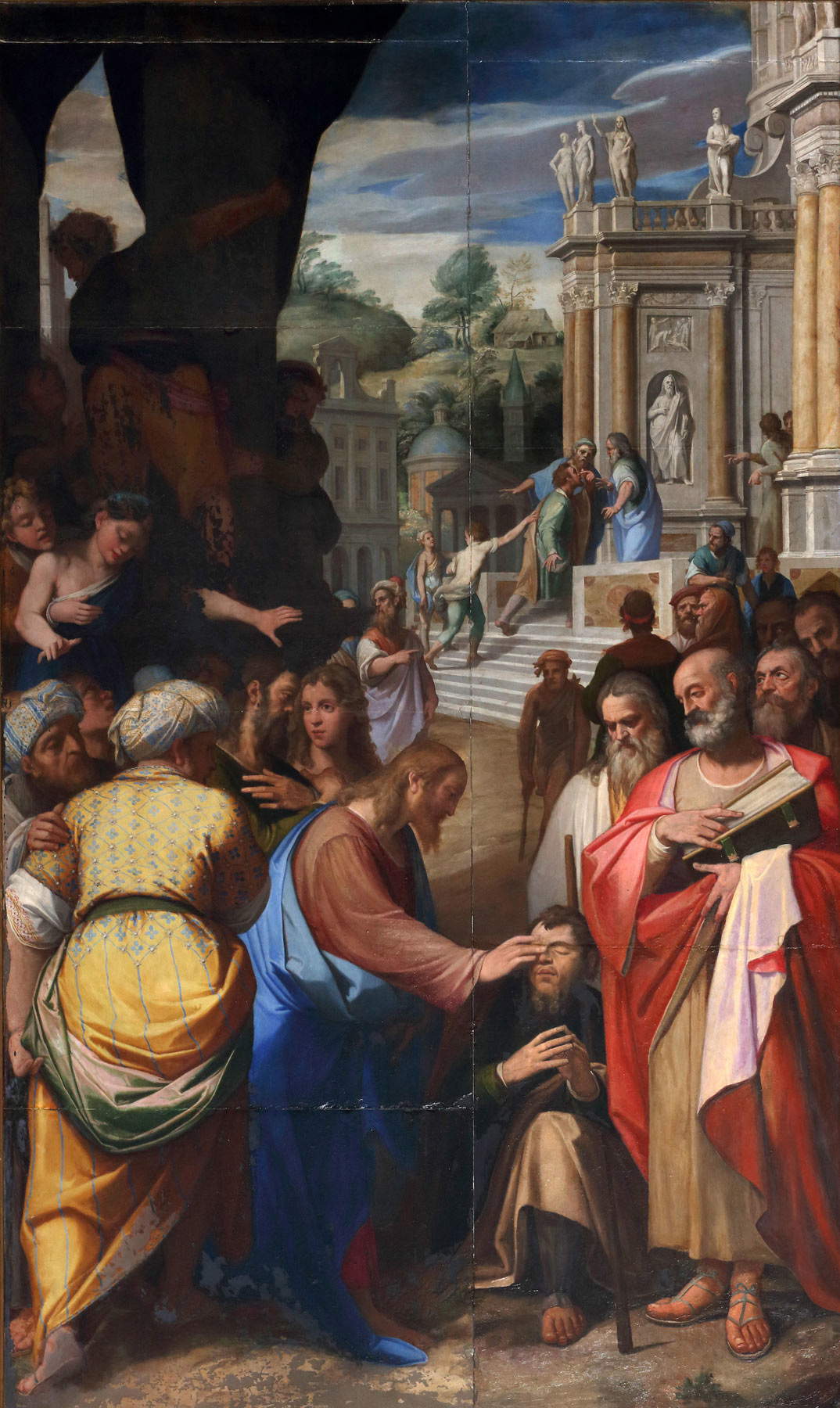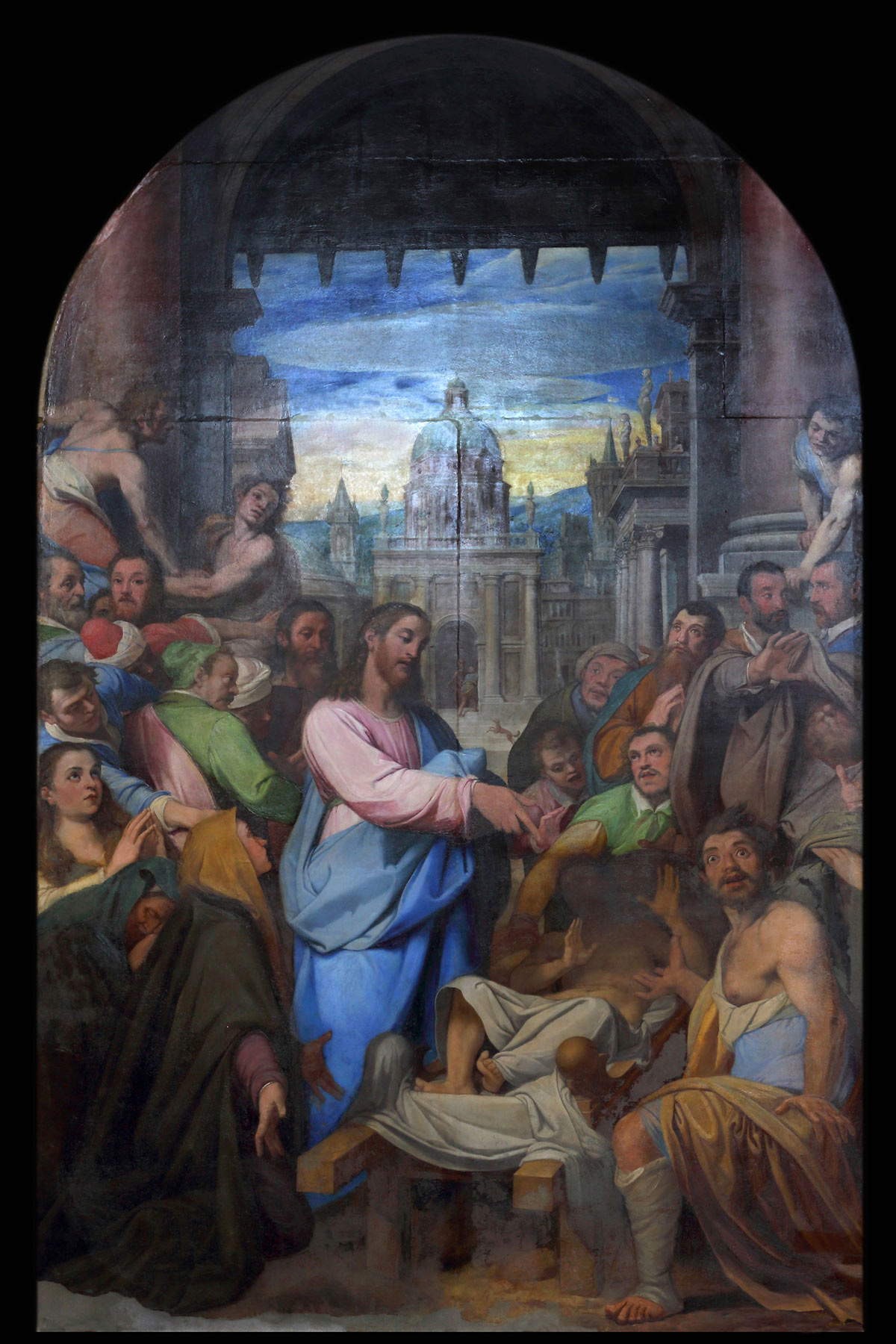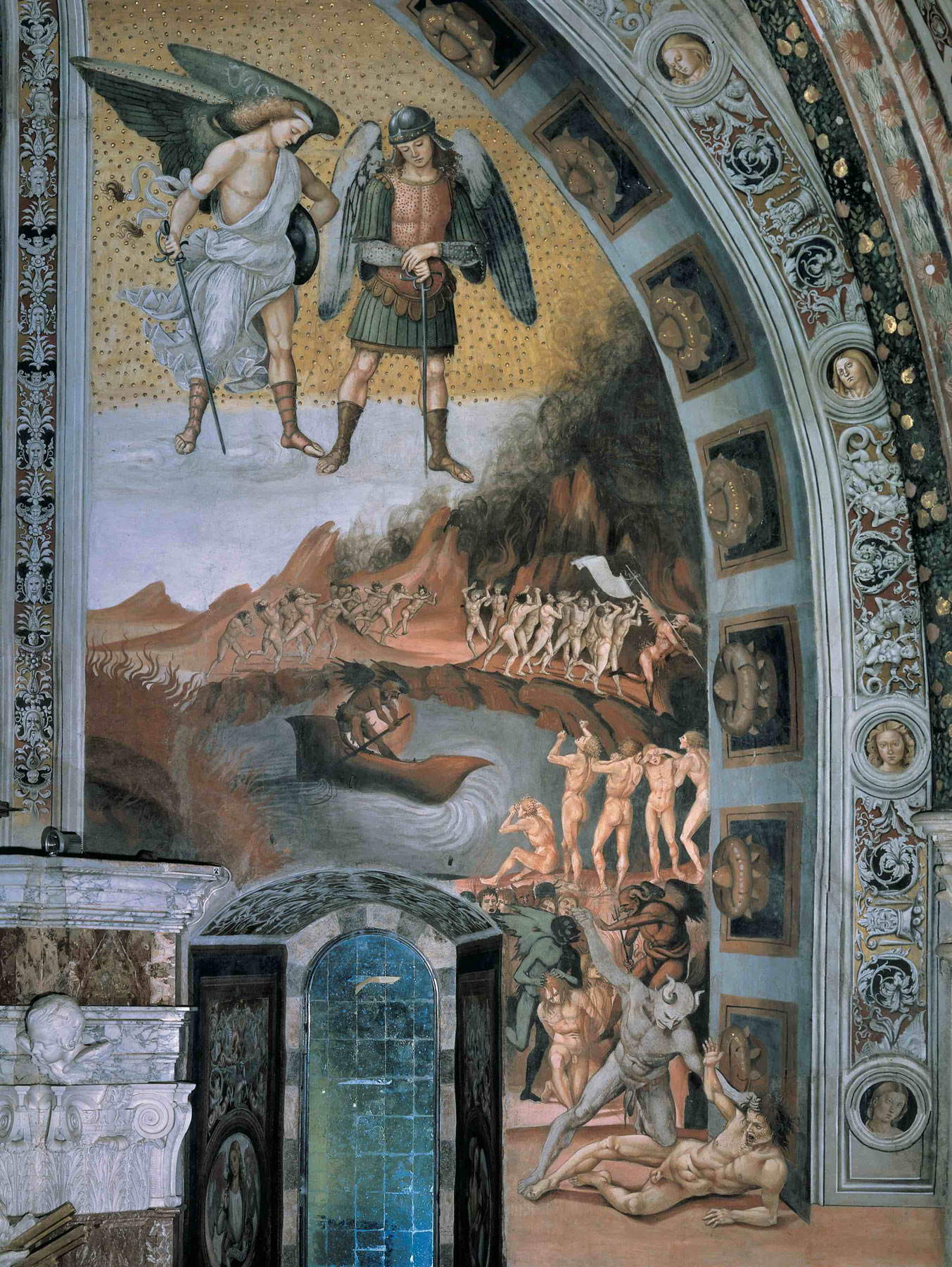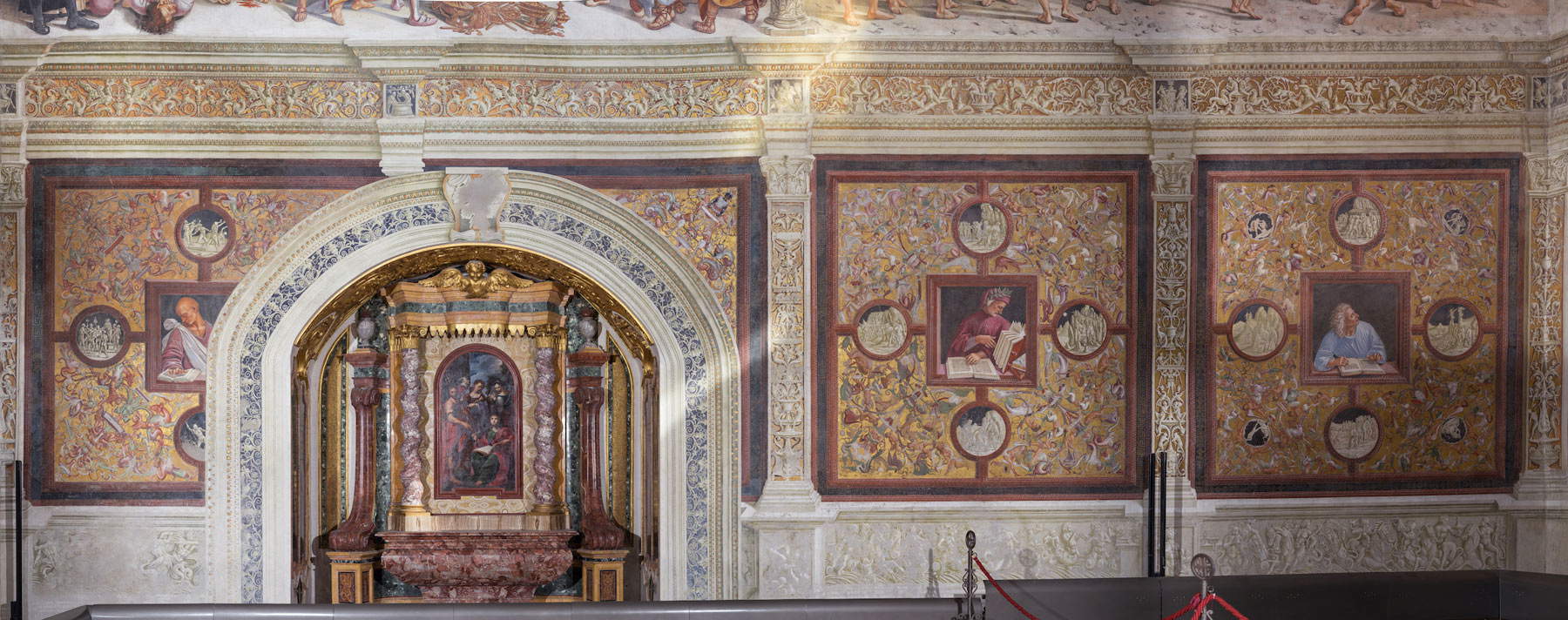Finally, 2020 has come to a close, and the first day of the new year was celebrated by a cultural fact of significance and good omen for the art world. The Uffizi Galleries opened the seven-hundredth anniversary of the death of Dante Alighieri (Florence, 1265 - Ravenna, 1321) by inaugurating a virtual exhibition that makes the eighty-eight drawings made in the late sixteenth century by Federico Zuccari to illustrate the Divine Comedy usable online. These beautiful papers, as delicate and sensitive as ever from a conservation point of view, have for this reason remained virtually unpublished and today for the first time they have been digitized in high definition and made accessible to the general public on the Florentine museum’s website. The exhibition, which is part of the digital cultural production that since the beginning of the pandemic many museums have been able to offer to web visitors, allows people to approach, as director Eike D. Schmidt, to valuable material not only for those doing research but also for those who, passionate about Dante’s work, are interested in delving into it to follow, as lAlighieri says, virtute e canoscenza.
This important event gives us the opportunity to recall that Federico Zuccari, an excellent artificer according to Giorgio Vasari of whom he was the continuator in the extraordinary undertaking of the decoration of the dome of Santa Maria del Fiore, stayed for a long time in Orvieto engaged in painting at the cathedral building site next to and then after his brother Taddeo, older and more famous than Federico but prematurely deceased, who had been one of the key-figures of the Orvieto project since its inception. Just a few years before tackling the Florentine cycle of the Last Judgment that remained unfinished due to Vasari’s death in 1574, Federico was in Orvieto to conduct the two altarpieces commissioned by the Fabbrica in 1568. These are two magnificent works depicting among the miracles of Christ the Healing of the Blind Man Born and the Resurrection of the Son of the Widow of Naim, which fortunately survived the destruction of the vast sixteenth-century pictorial assemblage of which the cathedral was, as they said, freed by the late nineteenth-century restorations.
The two paintings are striking for their very high technical quality, compositional efficacy and full mastery of the great pictorial Manner, but above all for the extraordinary brilliance of the subject matter, for the vivid, glazed colors due to the fact that they were spread on slate plates, rather than on canvas or panel, according to a technique of which Federico Zuccari was an expert master. Unfortunately, once they were removed from the cathedral before 1890, since they were composed of several joined pieces it was deemed appropriate to wall them up again: they took their place on the north wall of Palazzo Soliano, which became the home of the Museo dellOpera del Duomo in 1882, and there they still stand and shine after recent maintenance that can be appreciated when the room is finally reopened.
 |
| Federico Zuccari, The Miracle of the Blind Man Born (1570-1571; oil on slate stone; Orvieto, MODO - Museo dellOpera del Duomo di Orvieto) |
 |
| Federico Zuccari, The Miracle of the Son of the Widow of Naim (1571-1572; oil on slate stone; Orvieto, MODO - Museo dellOpera del Duomo di Orvieto) |
So Federico Zuccari had the opportunity to see up close and several times, if he wished, the frescoes in the Cappella Nova where Luca Signorelli had measured himself years earlier with the grave theme of the Last Judgment and had created with extraordinary inventiveness new figures and iconography worthy of the attention of Michelangelo, who, according to Vasari, was inspired by them in composing the Sistine. And later, we see that Vasari himself referred to it to set up the unfolding and score of Brunelleschi’s dome, and Zuccari returned to it and drew on it, exasperating with a truly visionary spirit the ingenious creation of multicolored demons, and forcing into excessive imagery the carnal entanglements and impossible glimpses of damned bodies disheartened to the extreme.
No one liked it, writes Claudio Strinati on the subject, and, for centuries, the immense work was singled out for public mockery, so much so that, from time to time, thought was given to whitewashing everything or demolishing that ignoble hodgepodge of figures, marked among other things by conspicuous obscenities in the infernal scenes below, such as the lustful sodomized by the devils’ flaming spears or the figure of the sinner who clings to the genitals of another damned as they plummet. But the greatest obscenity, for the people of Florence, has always consisted in the fact that an overweening, prevaricating boy from the Marche had allowed himself to outrage the purity of the dome’s architectural lines. But Zuccari had done more in the way of provocation: he became so bold as to include his own self-portrait and that of his family members among the ranks of the People of God, albeit among the humble and poor in spirit. Can we assume that he had a model? Perhaps so, since two drawings are known in which he reproduced I fatti dellAnticristo (Paris, Musée du Louvre), in which Signorelli had portrayed himself next to Beato Angelico as a sign of evident awareness, and I Dannati (Oxford, Christ Church), especially those among the most symbolic in which Dante’s poem had taken shape in Orvieto Cathedral.
 |
| Left: Federico Zuccari da Luca Signorelli, I fatti dellAnticristo (drawing; Paris, Musée du Louvre); right: Federico Zuccari da Luca Signorelli, I Dannati (drawing; Oxford, Christ Church). From Federico Zuccari. The Ideas, the Writings, edited by B. Cleri, 1997 |
 |
| Luca Signorelli, The Damned (1499-1504; fresco; Orvieto, Duomo, Cappella Nova) |
 |
| Luca Signorelli, The Antinferno (1499-1504; fresco; Orvieto, Duomo, Cappella Nova) |
 |
| The left wall of the Chapel of San Brizio |
 |
| Luca Signorelli, the portrait of Dante in the Chapel of San Brizio |
This same imagery and perhaps Orvieto’s examples alongside the vast Mannerist repertoire, from Raphael to Michelangelo, resurface and reactivate in Federico Zuccari’s Dante illustrations: years later the fantastic world of the Underworld was enriched with Nordic, Flemish suggestions, and contaminated with that of the grotesques, which Signorelli had used in the margins of the stories as a valuable filler, or supporting fabric of the great cameos in which he gave face to the classical foundations of Renaissance culture by including a single modern among the authorities: the supreme poet, Dante Alighieri.
To rediscover in presence the Dantesque content that animates the Nova Chapel of Orvieto Cathedral with extraordinary images (and which is continually being studied for its exceptional value) we will have to wait for the reopening of the cathedral to the public when in all the places of Culture from the pandemic we will finally be able to return “A riveder le stelle.” But in the meantime there can be virtual events that through technology and new sciences contribute to celebrate also from Orvieto the Dante Centenary and to feed the knowledge and sharing of this that without any doubt of recognition is a necessary part of the heritage of humanity. It is a precious legacy that can guide us into the future, a luminous path that lights up with the names of Dante, Signorelli, Zuccari and the artists who throughout the ages have been interpreters of the contemporary and who project Orvieto into history and the world, far beyond the squares, the cliff. Let us wish that 2021 will be the year of Dante Alighieri, the year of poetryand poets, the year of Art and Culture and, for this, of a present and better reality.
Warning: the translation into English of the original Italian article was created using automatic tools. We undertake to review all articles, but we do not guarantee the total absence of inaccuracies in the translation due to the program. You can find the original by clicking on the ITA button. If you find any mistake,please contact us.